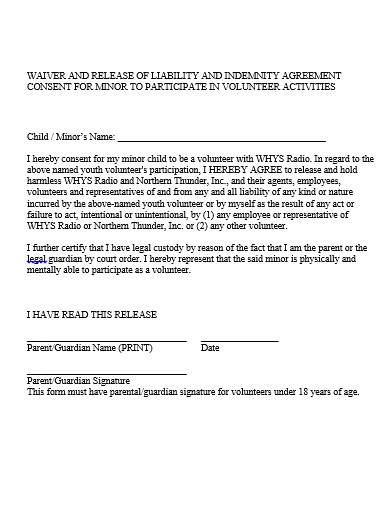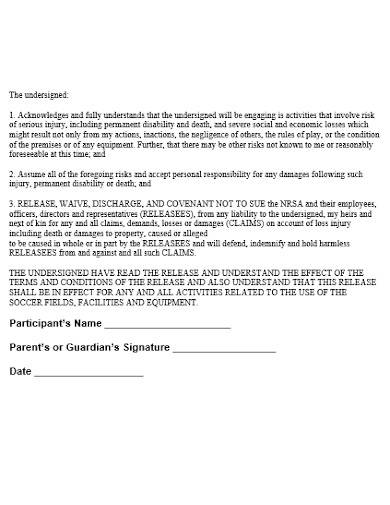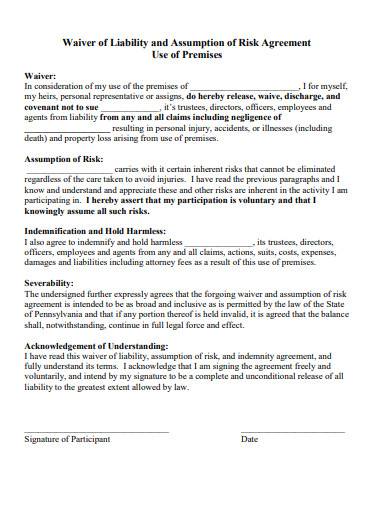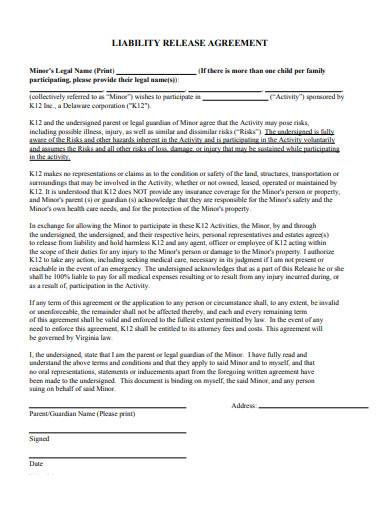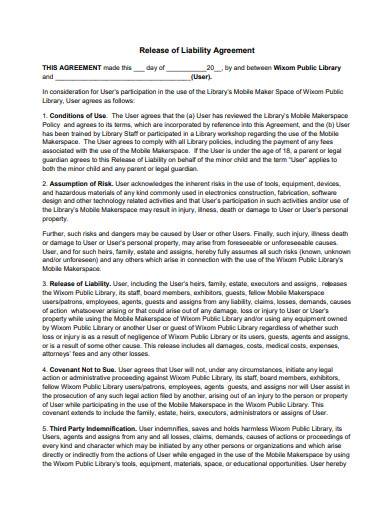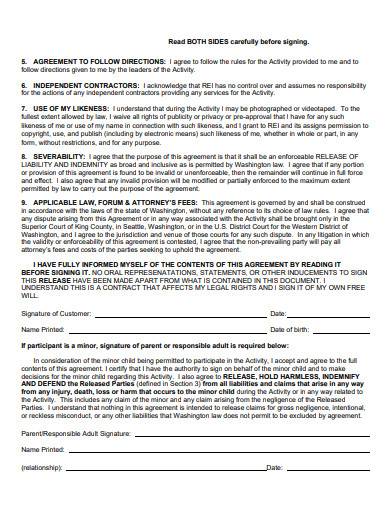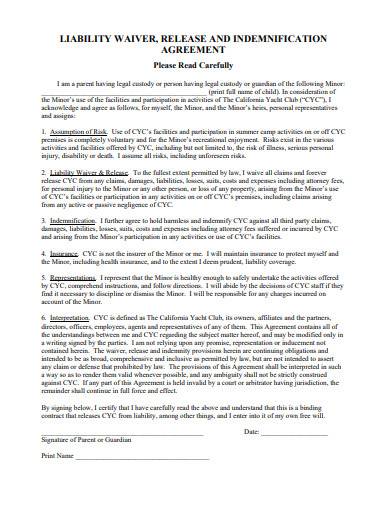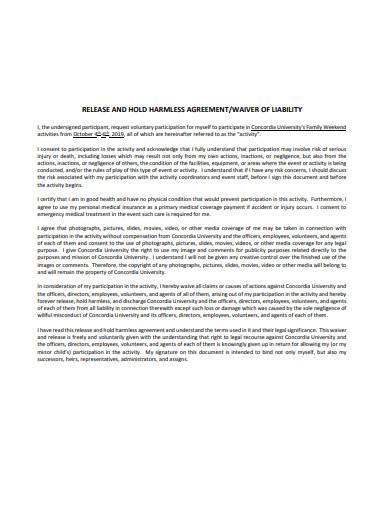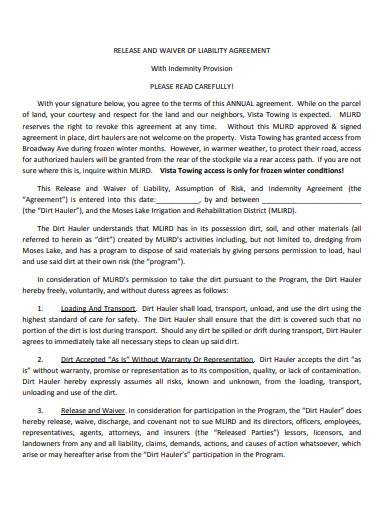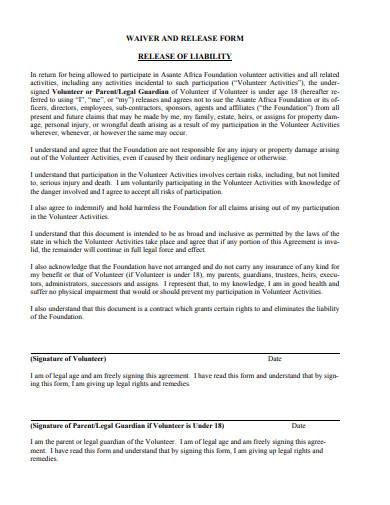When do you become liable for something? Let’s start with the saying, “You are responsible for your own action.” It tells us that we are held liable for everything that we do. That is regardless if we did it on our own accord or if we are told to do so. If you did something that hurt another or caused harm to another person, you can’t wash your hands like what Pontious Pilate did. That was the old times, and washing hands is no longer applicable in our current legal system. The appropriate thing to do is get a liability release agreement.
What Is a Liability Release Agreement?
When you caused harm to another, you are liable for what you did. The other person can sue you for such reason, wherein you may be summoned to court, or even get imprisoned. That will happen if you don’t take action. It’s troublesome to be involved in a lawsuit, and it’s often a long and tiring process. Some people, regardless if they are guilty or not, would try doing a settlement through a settlement offer letter. Another option is for them to wait for a demand letter from the suing party. One of the reasons is to get through the lawsuit quickly and avoid losing the case. The second reason is to release the harming party from any liabilities. So, aside from the settlement letter, a liability release agreement is also written.
A liability release agreement is a basic document that releases an individual or entity from the consequences of their actions on a certain situation. Of course, this agreement doesn’t come for free. In exchange for the release, the harming party must pay the suing party, or they must agree to the requests of the suing party. The transaction usually ends quickly when the price is right. Once both parties agree to the terms and conditions of the settlement, the liability release agreement is then produced and signed.
How to Write a Reliable Liability Release Agreement
Here are some tips you should take note of when writing a liability release agreement.
1. Provide Correct Full Names
An agreement is a legally binding document. And to bind the right person, you need to write their correct full names and other details on the agreement. It’s important to get this information right, or your agreement will be invalid, or worse, it would involve another person. Now, that’s another problem if they decide to sue. Aside from the correct full names, you should also get their ages and addresses right. All of these details are essential in an agreement.
2. Be Specific with Your Terms and Conditions
Basically, you went for a settlement because you want to be released from the liability. Now, if you’re not careful, you may still end up in court or in prison even if the agreement is signed. That is possible with faulty or ambiguous wording. That is why you have to make sure that your terms and conditions are clear and specific, and that what you want to happen is stipulated.
3. Use Samples and Templates
You can write an excellent liability release agreement using different samples and templates. In doing so, choose samples or templates that are relevant to your case. You can also use the clauses and wordings from several agreements and incorporate them with yours. However, keep in mind that they should be relevant.
4. Hire a Lawyer
If you want the best results, then you should go and hire a lawyer. Professional lawyers are experts in negotiations. Moreover, they can give you the best advice as to what actions to take. It’s their job to negotiate, and they can even help you make a more effective agreement. Of course, their services would come with a fee, so you must be prepared for that.
FREE 10+ Liability Release Agreement Samples and Templates in MS Word | PDF
1. Release of Liability and Indemnity Agreement
2. Release and Waiver of Liability Agreement
3. Waiver of Liability and Assumption of Risk Agreement
4. Waiver and Release of Liability and Indemnity Agreement
5. Liability Release Agreement Template
6. Release of Liability Agreement Sample
7. Activity Liability Release Agreement
8. Child Liability Waiver Agreement
9. Release and Hold Harmless Agreement
10. Release and Waiver of Liability Agreement
11. Volunteer Waiver and Release Form
Who should use a liability release agreement?
As previously mentioned, people who have done harm or caused harm to another are held liable for their actions. And they are also the individuals who are released by the agreement. In a lawsuit, the defendant is the party being released by the agreement. Liabilities that can be released by the agreement include general release claims, personal injury, vehicular accidents, mutual release, activity waiver and release, debt settlement, and damage to personal property.
Can I still sue after signing a release of liability?
It depends on the terms and conditions stated in the agreement. That is why it is important to hire a lawyer to handle the case. You may overlook this detail, but it won’t escape the professional’s eyes. Of course, if you accept the agreement knowing that you can’t sue after signing, then you are liable for your actions.
Whose signature is required in a written release agreement?
Both parties must affix their complete names and signatures in the agreement. This is proof that they both agree and give consent to take part in the agreement.
Related Posts
FREE 9+ Agreement Between Two Parties For Money Samples in ...
FREE 9+ Sample Declaration Agreement Templates in PDF MS Word
FREE 6+ Home Purchase Agreement Samples in PDF
FREE 9+ Subordination Agreement Templates in PDF MS Word
FREE 9+ Sample Power Purchase Agreement Templates in MS ...
FREE 6+ Sample Business Non-Compete Agreement Templates in ...
FREE 14+ Partnership Agreement Short Form Samples and ...
FREE 5+ Music Agreement Contract Samples in MS Word PDF
FREE 10+ Sample Retainer Agreement Templates in Google Docs ...
FREE 10+ Sample Project Development Agreement Templates in ...
FREE 15+ Sample Subcontractor Agreement Templates in PDF MS ...
FREE 5+ Sample Business Separation Agreement Templates in ...
FREE 6+ Sample Business Loan Agreement Templates in MS Word ...
FREE 8+ Sample Master Service Agreement Templates in PDF MS ...
FREE 12+ Sample Professional Services Agreement Templates in ...

